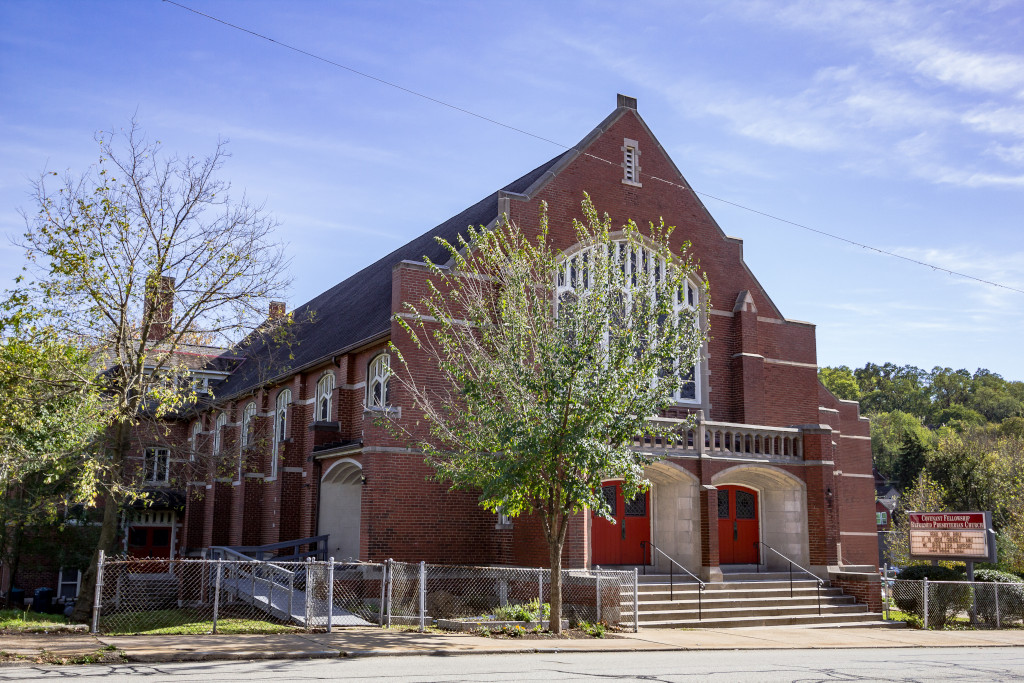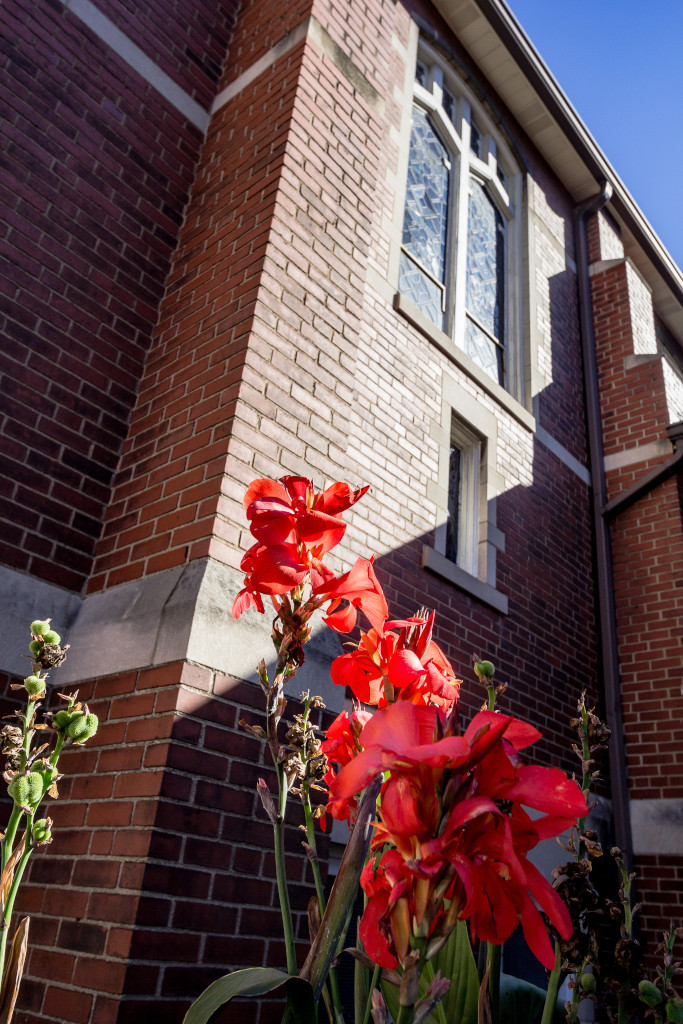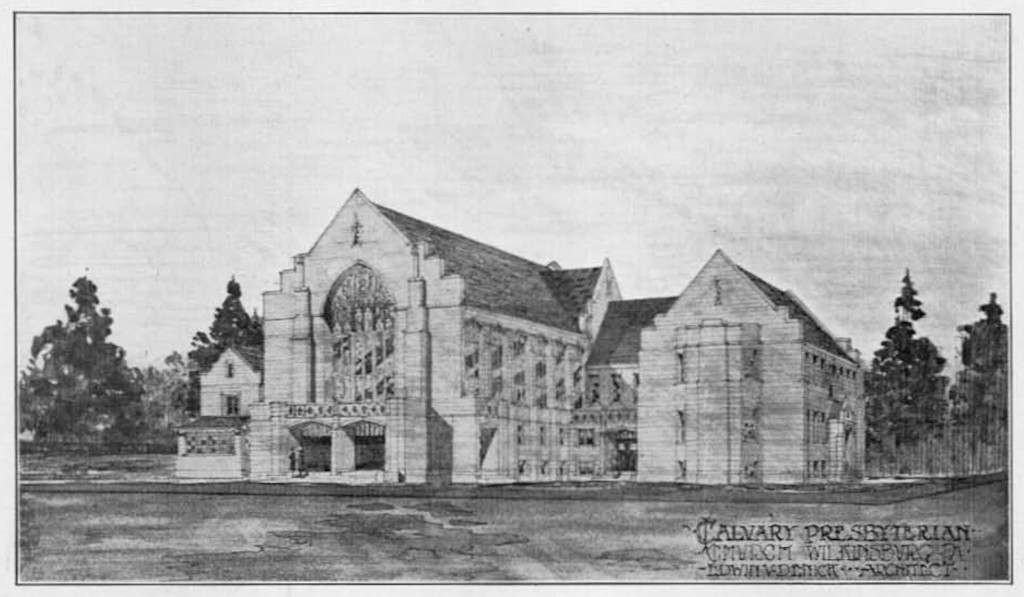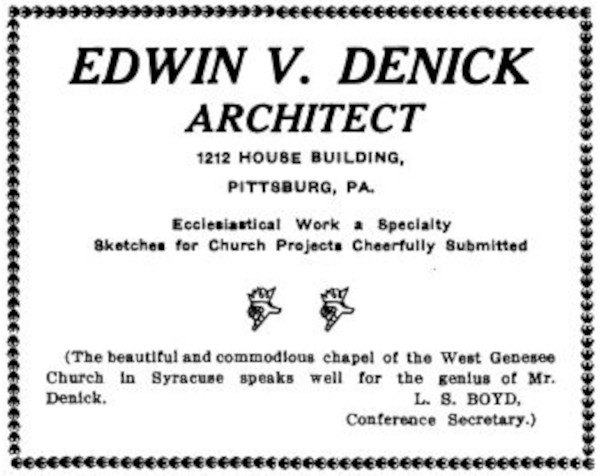Former Calvary Presbyterian Church
Architect: Edwin V. Denick
Dedicated: Dedicated October 6, 1929


The door handle represents attention to architecture detail. It has motifs in keeping with the overall architecture.

Edwin V. Denick

Originally from Syracuse, New York, Edwin V. Denick graduated from Syracuse University in 1901 with a B.Ar. [Architecture] degree. An alumni directory states, “Architectural draughtsman at Pittsburg, Pa. 1901–3. Architect at Pittsburgh.” His address is given as Arabella Street in Knoxville.
The Knoxville Methodist Protestant congregation began building a church at the corner of Zara Street and Georgia Avenue in 1901. “The structure is under the direction of Edwin V. Denick, architect. . . . The main auditorium will have a seating capacity of about 800. . . . The style is modernized Gothic in the exterior plan and design. . . .” The church building today is the Solid Rock Church.

Denick designed a variety of projects from homes to the Union School in Baldwin Township to a YMCA in Knoxville on Zara Street.
The congregation placed the corner stone of the Calvary Presbyterian Church on Sunday, October 7, 1928. Edwin Denick died on July 14, 1929, at the age of 52. The congregation dedicated the church on October 6, 1929.
The design of Calvary Presbyterian Church is Edwin Denick’s gift to the present and to the future, a summation work of all he learned and all he believed.
______
Alumni of Syracuse University, 1899–1903 Inclusive, p. 178.
https://surface.syr.edu/cgi/viewcontent.cgi?filename=19&article=1002&context=annals&type=additional
“1st Church. Fine New Church For Knoxville,” The Pittsburgh Press, November 1, 1908, p. 36.
The Construction Record, May 13, 1911, Y.M.C.A.: p. 8.
Pennsylvania School Journal, “Dedicated to the Youth of the Commonwealth for Heath ˜ Happiness, the General Welfare & Life More Abundant,” Special New School Buildings Number, December 1924, p. 87.
Central New York Conference, Methodist Episcopal Church, Forty-Seventh Annual Session, at Geneva, New York, September–October, 1914, ad.